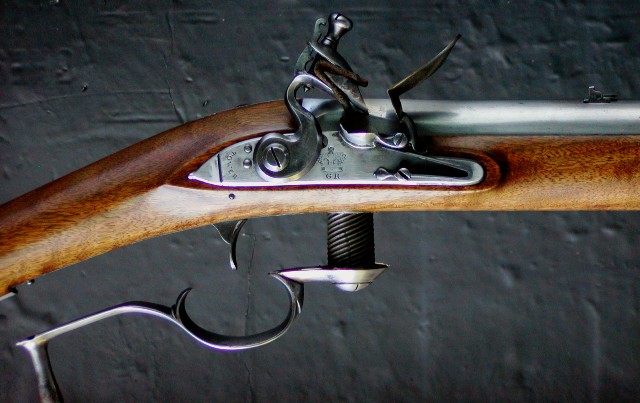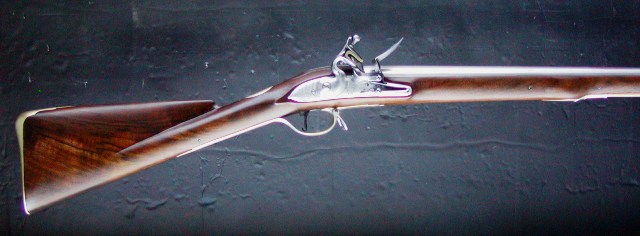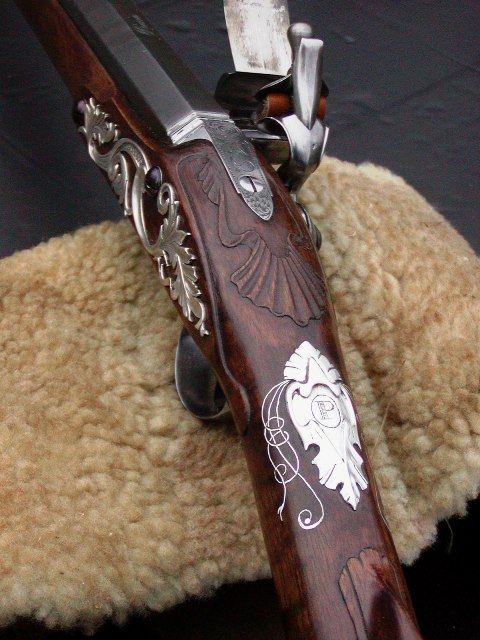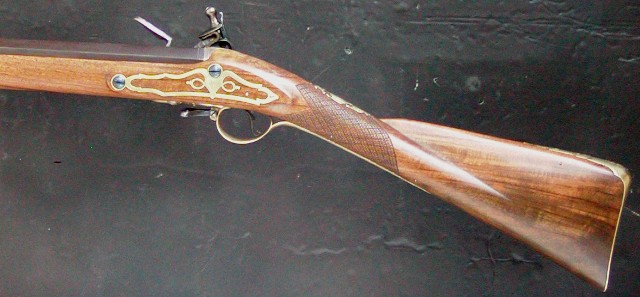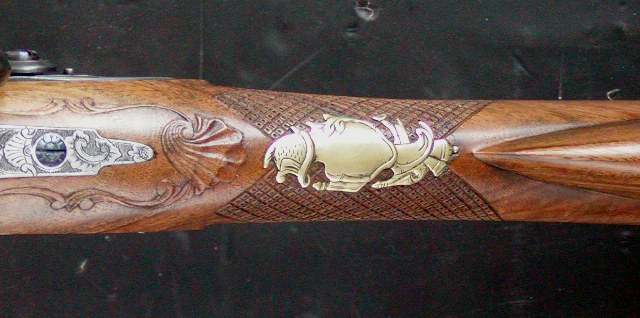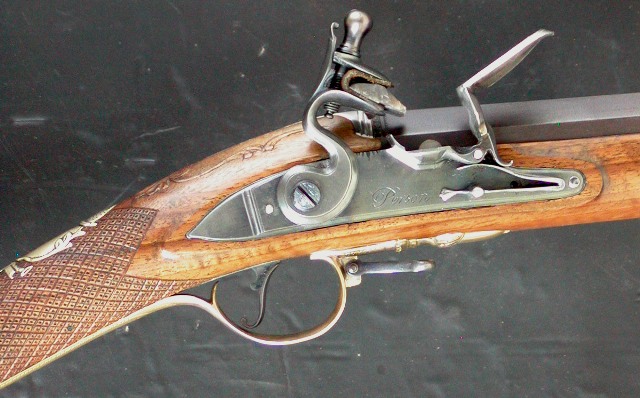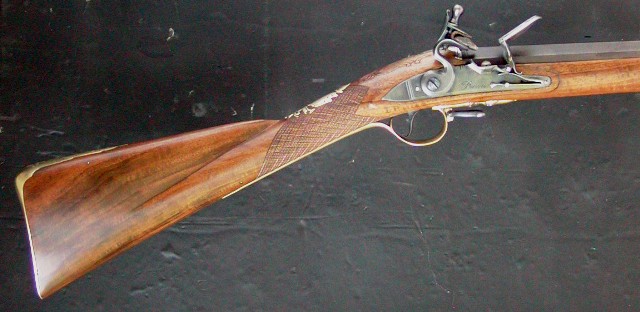Hi Gus,
Good to hear from you. The first is a Ferguson rifle made from TRS parts but from a rough English walnut stock blank. I refinished it last year after viewing the Morristown rifle up close.
The next is a British pattern 1760 light infantry carbine, the gun that likely fired the first British shots at Lexington and Concord.
The middle gun is a 1740s-1750s rifle modeled after the gun by Benjamin Griffin for Archibald Campbell who served in North America. It won best of master class at Dixons.
The next is a 1750s-1760s English fowler with barrel simulating that made by Spanish makers, the best in the world during the 17and 18th centuries. It was best of show at Dixon's in 2018 and is my favorite gun to shoot during woods walk. It hits everything I aim at.
The last is a 1770s rifled British officer's fusil. A few rifled versions were made but of course most were smooth and carbine bore. It represents 1770s styling (as opposed to the others that are earlier) complete with early checkering at the wrist. I intend to add a drop in smooth bored barrel but both will be fitted for a carbine bayonet.
All of the guns are great shooters although the light infantry carbine has a very straight stock like most muskets.
During the 18th century, British gunmakers were contractors bringing together barrel makers, lock makers, stockers, carvers, engravers, silversmiths, polishers, hardware makers,etc. I did not make any of the barrels, and 2 locks are Chambers, but I made all the rest, did all the carving, lock fitting, engraving, silversmithing, hardware making, stock making, and finishing. In addition, each gun required months of research from books, online, museums, and collections, as well as direct communication with historians. It represents a massive amount of work and dedication, and only shows what I still possess. A larger body of similar work is in the hands of clients including British horse pistols, dueling pistols, muskets, fowlers, and rifles bridging the period from 1740-1820 There is a lot more to come.
Dave




